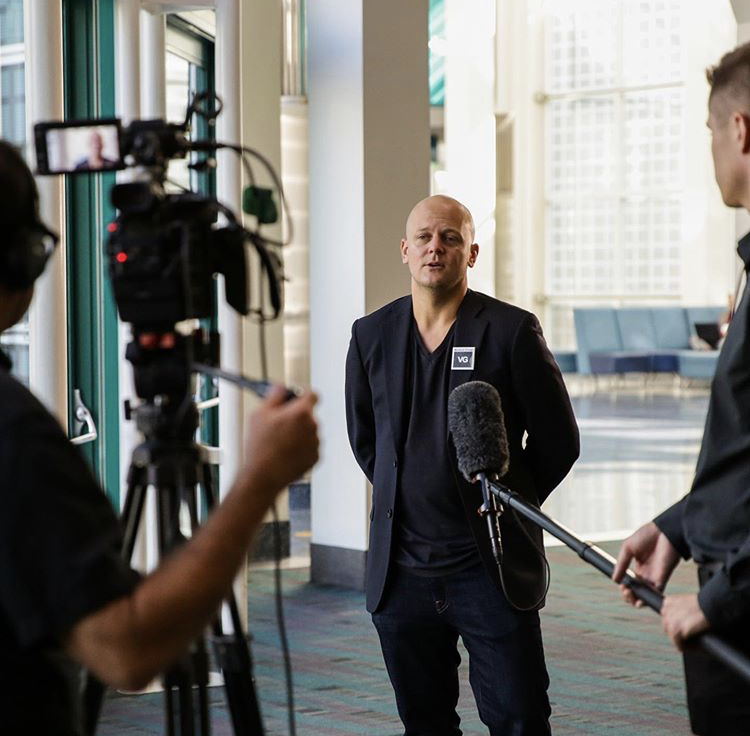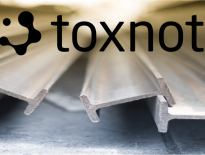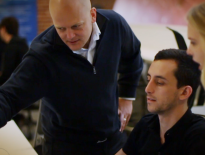The Net Zero Conference is the largest green building event hosted annually in California and the largest net zero building event in the world. This year’s conference, NZ19, will be hosted at on October 2 – 4 at the Los Angeles Convention Center.
The International Living Future Institute is a Program Partner for this groundbreaking event, helping to shape the conference’s focus and scope. We sat down with the event’s creator and current Event Chair, Drew Shula, to speak to him about the history of the event and what he’s looking forward to in the coming years.
Thanks for joining us today, Drew. Can you provide an overview of the Net Zero Conference for our readers?
We’ve heard from many people that the Net Zero Conference is their favorite building industry conference of the year, and I think that’s because we’re not focusing on aspirations, but on action. How to really get net zero buildings built. People have a lot of questions about how to go from an idea, or a goal, to a reality, and those questions are answered by industry leaders at this event — people who have done it and can share lessons-learned on how to drive the team, which products and materials to use, and what pitfalls to avoid.

The Net Zero Conference is the world’s largest event focused on net zero building, and it’s also the largest annual green building event in all of California — the leading green building market in the world. We’re focused on all aspects of the built environment’s impact on carbon, energy, water, waste and transit. People come back to the Net Zero Conference every year for inspiring keynote presentations, the best speaker panels, a super activated expo hall, and our ability to engage the most radically progressive group of green building leaders on the planet. It’s all happening at net zero — major announcements, case studies of amazing net zero buildings that have already achieved this audacious standard, and connections between high-level industry luminaries. It’s a cliche to say, but you really don’t want to miss it.
What was the inspiration behind the NZ19 Conference?
I’ve always said that Verdical Group (www.verdicalgroup.com) is a small team that makes an impact many times larger than you might expect for a team our size. Six years ago, our group of LA-based green building geeks started to hear a new buzzword to describe the cutting edge of high-performance buildings.
The phrase was “net zero,” and it described a building that harvested all the energy and water its occupants needed on the same site it was built on. The energy and water generated “zero out” the demand. If every building were built this way, there’d be no need for a grid.
We were experiencing a severe drought in California at the time and this idea really struck us as the future of building. Net zero buildings are resource independent and can function “off the grid.” In LA, we wouldn’t need to rely on water pumped in from the Colorado River for humans to thrive, if every building produced enough water for its occupants on its own.
There had also been statewide goals established in California to move toward this super progressive building standard. As always, California was leading the way for the rest of the world with environmental standards. We wanted to help push the building industry forward as fast as possible to make as great a positive environmental impact as possible. Climate change was (and is) rapidly changing the world and we felt like action was important right away. We wanted to see a truly sustainable built environment, so we decided to organize an event around the idea of “net zero” to spread awareness about the movement and educate folks in the building industry — architects, engineers, and builders. Our first event was a pretty humble beginning, but it’s taken off from there.
How did the event grow into what it is today — the world’s largest net zero building event?
In year one, we did everything ourselves and only got help if it was free. We got an architect at Gensler to design our flyer, and we marketed the event through emails and social media. One of the local utilities let us use their venue for free. We had no costs, we just used our team’s time to put the event together, and we brought in a few sponsors to help us break even on our time. About 100 people showed up, and we thought that was awesome. We had helped inspire a net zero future for 100 building industry leaders in LA!
We got more and more passionate about net zero buildings and decided to do the conference again the next year even though we didn’t make any money on it the first time around. As a B Corporation, our mission goes beyond profit to social and environmental impact as well, so we justified the effort because we knew we were making an incredible impact through education. The second year, 300 people showed up. We thought, “Wow, that was a big jump from year one to year two,” so we kept going, and the conference grew larger every year.
Now in our sixth year, we’re expecting 1,200+ attendees and 100+ exhibitors, and we’re finally making some money doing it. Companies see the value in net zero and are paying to sponsor the event to engage and have a presence with our attendees.
We’ve worked hard to get really good at event planning, and other companies started to notice, so we spun off Verdical Events (www.verdicalevents.com), a sustainable event production consulting company. Verdical Events has now produced major sustainable events, including the B Corp Champions Retreat and events for the largest California utilities and the U.S. Green Building Council Los Angeles Chapter.
I think when you’re passionate about something, that passion is infectious, and others want to get involved. Most importantly, we know how to throw a great party and get our community excited about designing and building the absolute best buildings we can. We can’t wait to see how much the Net Zero Conference continues to grow in years to come.
What is new with this year’s event?
As we continue to scale up, the big change this year is that we’ve relocated to the LA Convention Center! This is the premier conference venue in Southern California and sets us up with room to grow for many years ahead, as we move toward the planned net zero code requirements for all new construction buildings in California. The next 10 years will be here before we know it, and we expect the conference to grow significantly as momentum and interest increase between now and then.
We’ve also added tours of net zero and near-zero building this year, so that attendees can get on site to learn about net zero. We’re also launching our Trailblazer Awards to recognize leaders blazing the trail toward a net zero future — people on the ground getting it done, with completed projects under their belts that can become case studies to share with the world.
Last year, we started our Robin Hood Gala (www.robinhoodgala.com) a mid-conference dinner party that focuses on raising awareness around the homelessness crisis in LA, and that has really expanded this year. There are nearly 59,000 people experiencing homelessness in LA County right now. This is heartbreaking and an unnecessary tragedy that we can all work together to solve.
What’s next for the Net Zero Conference?
While we’re a for-profit business and profit is important to keep the lights on, growth for us isn’t only about profit. For us, as a B Corp and 1% for the Planet Member Company, positive impact is just as important.
We’re looking to expand our impact every year we put on the Net Zero Conference. Our growth trajectory has been up and to the right, and we want to stay on that course. We’re inspiring thousands of people to build radically better buildings, and I can’t image a better way to spend my time than working with great people to create an avalanche of impact. Inspiration has a way of spreading like wildfire, and our hope is that we can inspire everyone at the Net Zero Conference to go back to their offices and bring what they learned to their clients and the projects on their desks. Ideas become actions, and before we know it, we’ll be living in the net zero future we dreamed was possible.



